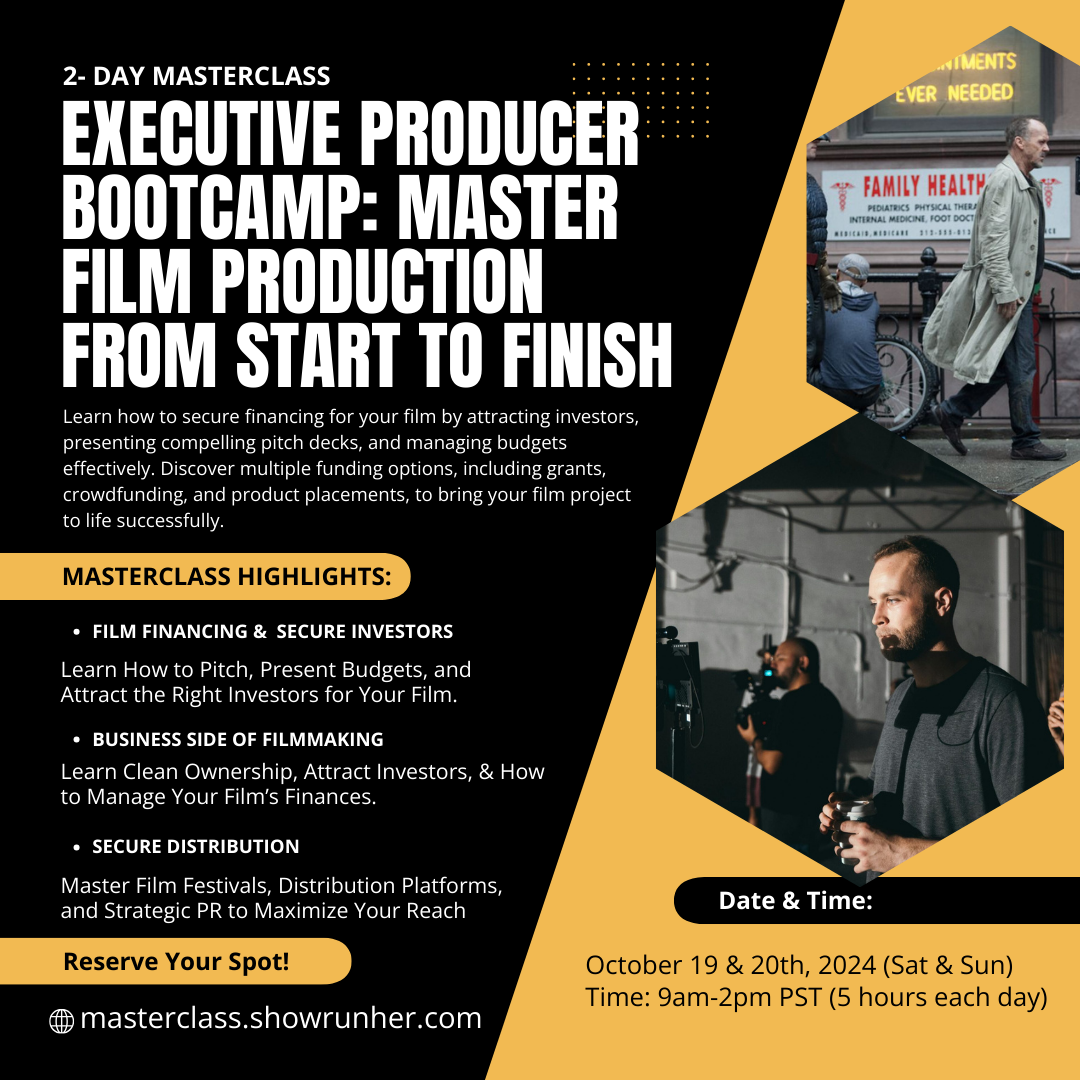Indie filmmaking is a labor of love, a creative journey often embarked upon with passion and limited resources. Whether you’re a seasoned filmmaker or a first-time director, the challenges that arise on an indie film set can feel daunting. However, with a proactive mindset and strategic problem-solving, these hurdles can be transformed into opportunities for creativity and growth. Here’s a guide to overcoming some of the most common obstacles faced on an indie film set.
Great films aren’t defined by their budget, but by the creativity, passion, and resilience behind them. The hurdles you face on set aren’t obstacles—they’re opportunities to innovate and make your vision stronger.
1. Budget Constraints
One of the most persistent challenges in indie filmmaking is working with a limited budget. When every dollar counts, it’s essential to prioritize spending and make the most of available resources.
Solution: Creative Resource Allocation

- Prioritize Essentials: Identify the most critical elements of your film that require financial investment, such as equipment, locations, and key crew members.
- In-Kind Contributions: Leverage your network to obtain services or equipment at a discounted rate or for free. Many people in the industry are willing to support indie projects, especially if they believe in the story.
- Crowdfunding: Engage your audience early through crowdfunding platforms. Not only can this help raise funds, but it also builds a community of supporters who are invested in your project.
- DIY Mentality: Embrace a do-it-yourself approach wherever possible. For example, consider building simple sets, borrowing costumes, or using natural lighting.
2. Time Management
Time is a precious commodity on any film set, but on an indie project, where schedules are often tight, managing it effectively is crucial.
Solution: Efficient Planning and Flexibility
- Detailed Pre-Production: Invest time in thorough pre-production planning. This includes creating a realistic shooting schedule, preparing shot lists, and conducting rehearsals to minimize on-set surprises.
- Contingency Plans: Always have backup plans for critical scenes. Weather, location issues, or technical problems can disrupt your schedule, so plan for these contingencies.
- Delegate Tasks: Empower your crew by delegating responsibilities. Trusting your team allows you to focus on directing and creative decisions while ensuring that the production stays on track.
3. Technical Challenges
Technical issues, from equipment malfunctions to sound problems, can derail an indie film shoot. Unlike big-budget productions, indie filmmakers often lack the luxury of backup equipment or technical support teams.
Solution: Preparation and Adaptability
- Thorough Equipment Checks: Before shooting begins, conduct comprehensive checks of all equipment. Make sure everything is in working order and that you have backups for essential gear, such as batteries and memory cards.
- Simplified Technical Requirements: Consider simplifying your technical requirements. For example, shooting with available light can reduce the need for complex lighting setups, and using minimal camera movement can decrease the chances of technical glitches.
- On-the-Fly Problem Solving: Embrace the mindset of solving technical issues as they arise. Stay calm and collaborative, encouraging your team to come up with creative solutions quickly.
4. Talent and Crew Management
Indie films often rely on smaller crews and less experienced talent, which can lead to issues with coordination, communication, and performance.
Solution: Clear Communication and Team Building

- Set Clear Expectations: From the outset, ensure that everyone on set understands their roles, responsibilities, and the vision for the film. This clarity will help prevent misunderstandings and keep the production running smoothly.
- Foster a Collaborative Environment: Create an environment where everyone feels valued and heard. Encourage feedback and ideas from your team, and be open to collaboration. A positive set atmosphere can significantly impact the final product.
- Rehearsals and Workshops: Conduct rehearsals and workshops with your actors before filming begins. This not only improves performances but also helps build trust and rapport between the cast and crew.
5. Location Scouting and Management
Securing and managing locations is often a major challenge for indie filmmakers, especially when resources are limited.
Solution: Strategic Location Choices and Planning
- Multi-Use Locations: Choose locations that can serve multiple purposes within your film. For example, a single building might double as different settings by dressing it differently for each scene.
- Permits and Permissions: Secure necessary permits and permissions well in advance. Be clear about your needs with location owners to avoid misunderstandings on the day of the shoot.
- Logistics Planning: Plan logistics carefully, considering factors like transportation, power supply, and access to facilities. Ensure that your locations are practical and accessible for your crew.
6. Post-Production Challenges
Editing, sound design, and color correction are vital to the success of your film, but post-production can be a significant challenge when working on an indie budget.

Solution: Streamlined Post-Production Workflow
- Plan for Post from the Start: Keep post-production in mind during the entire filmmaking process. Shoot with editing in mind, using techniques like in-camera transitions or consistent lighting to make the editing process smoother.
- Outsource Wisely: If your budget allows, consider outsourcing critical post-production tasks to professionals. However, prioritize the most essential aspects, such as sound design, which can significantly affect the final product’s quality.
- Utilize Affordable Software: Leverage affordable or even free software for editing and effects. Many indie films have achieved professional-quality results using readily available tools.
7. Distribution and Marketing
Getting your indie film seen by an audience is often as challenging as making the film itself. Without the backing of a major studio, distribution and marketing can be an uphill battle.
Solution: Build an Audience Early and Leverage Digital Platforms
- Film Festivals: Submit your film to festivals that cater to indie filmmakers. Festivals not only offer distribution opportunities but also provide exposure to critics and industry professionals.
- Social Media Marketing: Utilize social media to build an audience from the early stages of production. Share behind-the-scenes content, teasers, and updates to generate interest and create a fan base.
- Online Distribution: Consider online distribution platforms like Vimeo, YouTube, or dedicated indie film platforms. These platforms offer global reach and can be a cost-effective way to distribute your film.
Conclusion
Indie filmmaking is an exhilarating journey filled with challenges that can seem overwhelming at times. However, by approaching each hurdle with creativity, strategic planning, and a collaborative spirit, you can overcome these obstacles and bring your vision to life. The key is to stay adaptable, resourceful, and focused on the story you want to tell. After all, some of the most celebrated films in cinema history were made under the constraints of indie filmmaking, proving that with the right mindset, anything is possible.











